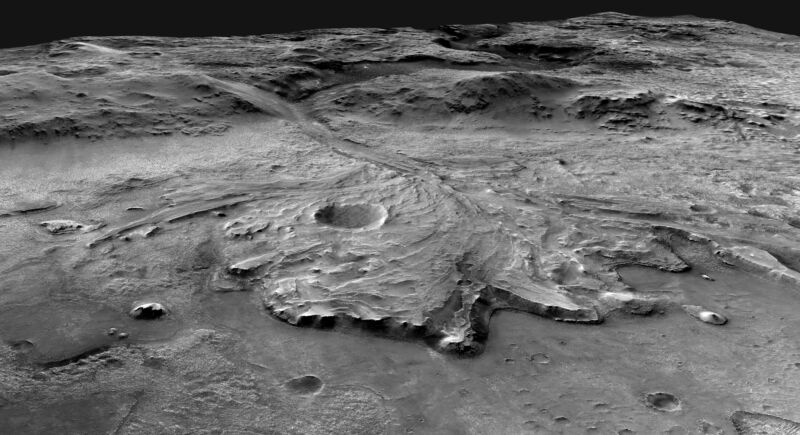
Organic chemicals, mainly composed of carbon and hydrogen, underlie all life. They are also widespread in the universe, so they cannot be taken as a clear signature of the presence of life. That creates a nasty situation with regard to looking for evidence of life on Mars, which, despite the harsh environment, clearly contains some organic chemicals.
But we don’t know if these are the right kind of molecules to be indicative of life. At the moment, we also lack the ability to break apart Martian rocks, isolate the molecules, and figure out exactly what they are. In the meantime, our best option is to get some raw information on them and find out the context of where they were found on Mars. And a major step has been taken in that direction with the publication of imaging results from the Perseverance rover.
Ask SHERLOC
The tool that is key to the new work has a name that pretty much tells you it was designed to address this particular question: scanning habitable environments with Raman & Luminescence for Organics and Chemicals (SHERLOC). SHERLOC comes with a deep UV laser to excite molecules to fluoresce, and the wavelengths at which they fluoresce can tell us something about the molecules present. It also has the hardware to perform Raman spectroscopy at the same time.
Collectively, these two possibilities indicate what types of molecules are present, although they typically cannot identify specific chemicals. And, crucially, SHERLOC provides spatial information, telling us where sample-specific signals are coming from. This allows the instrument to determine which chemicals are in the same spot in a rock and thus likely formed or deposited together.
SHERLOC can sample rocks simply by being held nearby. The new results are based on a series of samples from two rock formations found at the bottom of the Jezero crater. In some cases, the image was created by pointing it directly at a rock; in others, the rock surface, and any dust and contaminants it contained, was abraded away by Perseverance before the image was taken.
SHERLOC identified a variety of potential organic material signatures in these samples. There were a few cases where it was technically possible for the signatures to be produced by a very specific non-carbon chemical (mainly cerium salts). But given the choice between a huge range of organic molecules or a very specific salt, the researchers prefer organic materials as a source.
What was clear was that the amount of organic material present changed over time. The deeper, older layer called Séítah contained only one-tenth of the material found in the Máaz rocks that formed above it. The reason for this difference is not clear, but it indicates that the production or deposition of organic matter on Mars has changed over time.
Regional differences
Between the different samples and the ability to resolve different regions of the samples, the researchers were able to identify several signals, each of which appeared in many samples. Although it was not possible to identify the specific molecule responsible, they were able to say quite a bit about it.
One signal came from samples containing a ringed organic compound along with sulfates. The most common signal came from a two-ringed organic molecule and was associated with several salts: phosphate, sulfate, silicates, and possibly a perchlorate. Another probably contained a benzene ring associated with iron oxides. Another ringed compound was found in two of the samples.
All in all, the researchers conclude that these differences are significant. The fact that different organic chemicals are consistently associated with different salts suggests that either there were different ways of synthesizing the organics, or that they were deposited and stored under different conditions. Many of the salts seen here are also associated with water-based deposition or water-driven chemical alteration of the rock – again, consistent with the processes changing over time.
Collectively, the researchers say this argues against the fact that the organic chemicals were simply delivered to a Martian meteorite.
Again, the instrument can’t tell us what the chemicals are, so there’s no way of knowing if any of the processes involved in creating these deposits involved living things. But that could eventually change, as some of the rocks SHERLOC examined have been used to obtain material for the planned return of Mars samples. If that mission ever comes along, we’ll finally have a chance to isolate and study the chemicals on Earth.
Nature, 2023. DOI: 10.1038/s41586-023-06143-z (About DOIs).

